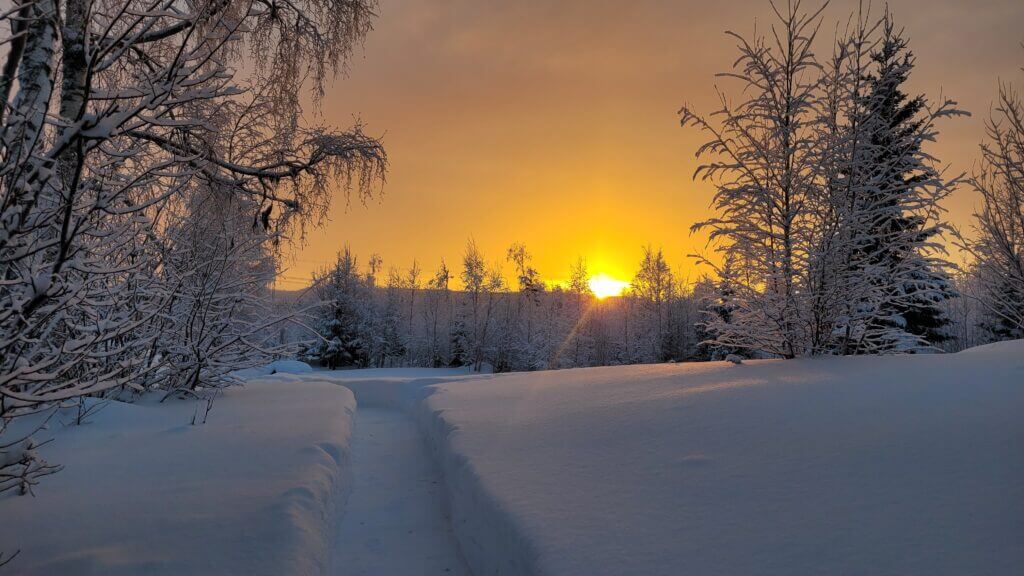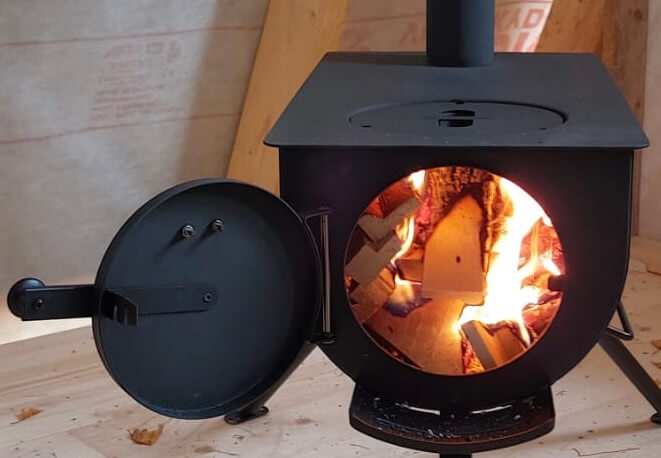
From Cold to Cozy: The Magic of wood heating
What if you wake up in the morning and it’s only 12 degrees in your room? Brrr… you weren’t expecting that. Is the thermostat broken? Or set incorrectly? Either way, you turn a knob, and before you know it, it’s warm and cozy again.
But what if that’s not an option?
On the first morning of a retreat at Jep’s Place, this is exactly how it feels. There’s no programmed thermostat taking care of everything for you. Living off-grid and self-sufficient means you have to light your own fire. And that takes some getting used to. At home, you hardly think about it—just press a button, and warmth surrounds you. Here, it requires attention, action, and a bit of skill.
At Jep’s Place, we and our guests strive to be as self-sufficient as possible. We haven’t mastered every aspect yet, but we do what we can. Take food, for example: we’re not entirely self-sufficient, but we buy as much as possible from local farms. In winter, that means apples as the main fruit and fresh vegetables consisting mainly of cabbages and root crops. What we harvest and forage in warmer months, we preserve—by freezing, fermenting, pickling, or canning. Our homemade sauerkraut is a winter favorite—crunchier and more flavorful than store-bought, and entirely self-sufficient.
When it comes to heat, we are self-sufficient. Every house has a wood stove or a vedspis (wood-burning cooker), and we own 12 hectares of forest. In central Sweden, the annual tree growth is 5 to 10 cubic meters per hectare. This means we could burn up to 120 cubic meters of wood per year without diminishing the forest. In a cold winter, with many guests, we use no more than 20 cubic meters—well within what nature provides us. Hot water is still heated with gas, which we purchase in bottles, and the bathroom heating runs on a gas heater. But our next project is a wood-fired central heating system that will power the underfloor heating in the bathroom and provide hot water.

Now, back to the cold. Guests who aren’t used to this way of life often find it challenging at first. It’s not just about waking up in a chilly room—it’s realizing that the fire must be maintained throughout the day. Even experienced cold therapy enthusiasts who swim in ice baths back home find this a whole new challenge. Because yes, you have to stay attentive. But that’s where the beauty lies. It requires presence. You’re not just using your mind, but also your hands. And that’s surprisingly relaxing.
With a good stove and an hour of steady burning, you can warm up a small cabin beautifully. That’s why we don’t provide a backup gas heater. It produces less warmth, isn’t self-sufficient, and doesn’t offer the same sense of relaxation as tending a fire. We’re not here to make things easy for our guests—we’re here to offer a real, transformative off-grid experience. And tending your own fire is part of that.
At first, it may seem like a challenge, but soon it becomes a ritual. The crackling fire, the warmth gradually spreading through the cabin—it awakens something primal. In the end, you realize: this isn’t just about staying warm. It’s about being truly present in the moment.